Arelate (Arles)
Q641068Arelate: important Roman city in souther France, modern Arles.
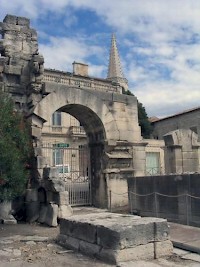
Arles is one of the oldest cities in France. It is first mentioned as Theline, one of the native towns trading with the Greek town Massilia (modern Marseilles). In 535 BCE, it was captured by the tribe of the Saluvii, who changed its name to Arelate. The Romans took the town in 123.
After a canal had connected the town to the Mediterranean sea in 104, it became an important trade center. Julius Caesar refounded the town in 46 BCE as a colonia, where he settled veterans of the Sixth Legion Ferrata. The city was now called Colonia Iulia Paterna Arelatensium Sextanorum, "the ancestral Julian colony of Arles of the soldiers of the Sixth".
The city has several important monuments. The theater was built by Caesar's adoptive son and successor Augustus, had a capacity of 10,000 people, is 102 meters wide, and is still in use. The amphitheater is close to the theater, was built in the last quarter of the first century and is, therefore, slightly younger than the Colosseum in Rome. It offered seats to 20,000 people. A circus (hippodrome) was found in the southwestern part of the city, along the river Rhône. There's an aqueduct, and a part of the city's wall has survived. Finally, the Baths of Constantine deserve to be mentioned.
Under the emperor Constantine I the Great (306-337), Arles was briefly an imperial residence, from 308 until Constantine had captured Rome in 312. He built the bathhouse. After the collapse of the Rhine frontier in the first decade of the fifth century, Arles became the seat of the government of the prefecture of Gaul. It remained one of the capitals of the western empire until it was captured by the Visigoths in 471.
To the southeast of Arles is the Alyscamps, a cemetery that dates back to the fourth century CE.
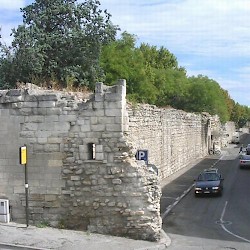 Arelate, City wall |
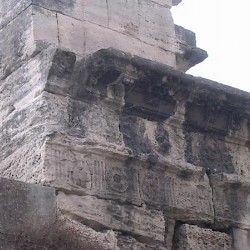 Arelate, Theater, Decoration |
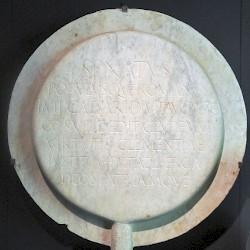 Arelate, Clipeus Virtutis of Augustus |
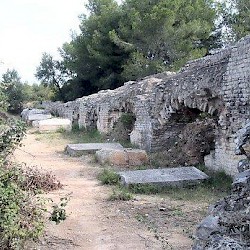 Arelate, Aqueduct |
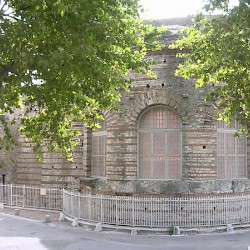 Arelate, Baths of Constantine |
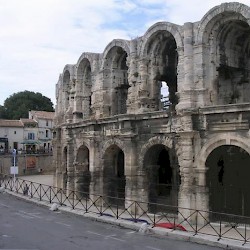 Arelate, Amphitheater |
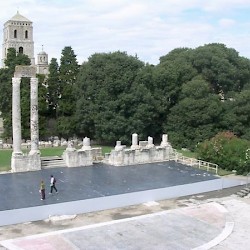 Arelate, Theater, Stage |
One of the most interesting finds from Arles is the Clipeus virtutis of Augustus: a replica of an honorary shield that was awarded to Rome's first emperor in 27 BCE and was shown in the Curia Julia. The original text commemorated several virtues, and the copy from Arles is almost identical, except that the date has been changed: 26 BCE. This may refer to the date on which a program of urban renewal was launched.